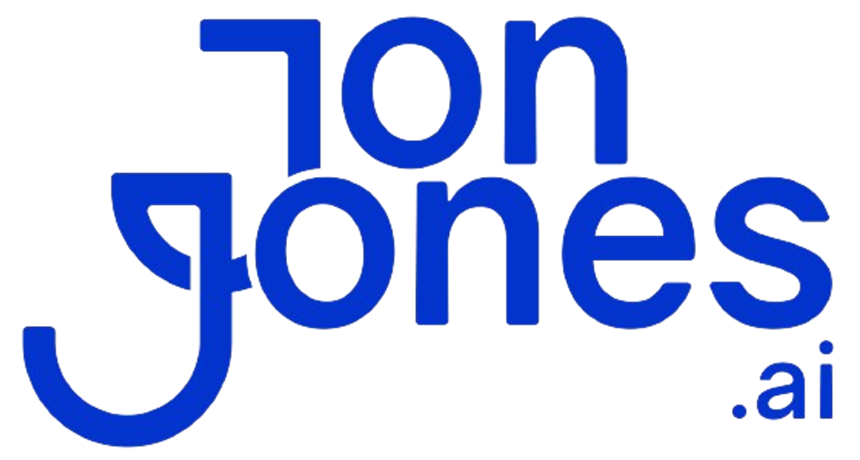Ever feel buried under a mountain of reports and articles? AI (artificial intelligence) document summarization tools (apps that whip long text into bite-size highlights) will rescue you in seconds.
We’ve tested four standouts (Jasper AI, SummarizeBot, SMMRY, and QuillBot) to find the one that turns hours of reading into minutes of action. You’ll see which tool pumps up your pace, keeps tasks rolling, and chops your reading time in half.
So, ready for a smoother workflow? Let’s dive in.
Top AI Document Summarization Tools to Compare at a Glance

Ever felt swamped by long reports, articles, or transcripts? AI document summarization tools (apps that create short versions of long text) step in like a magic highlighter. We’ll show you four standout picks: Jasper AI, SummarizeBot, SMMRY, and QuillBot. Nice.
Jasper AI uses natural language processing (an algorithm that helps computers understand everyday speech). It turns PDFs, Word docs, and web pages into tight summaries in over 20 languages. Think of it as your 24/7 research assistant.
SummarizeBot handles text, audio clips, and videos. It covers more than 100 languages and plugs right into Slack or Facebook Messenger. So you can get bite-sized insights without leaving your chat.
SMMRY keeps things ultra-simple. Pop in text or a URL, pick a summary length, and you’re off. It’s free and lightning-fast, though it only speaks about five languages and skips fancy formats.
QuillBot does double duty: summarizing and paraphrasing (rewriting in fresh words). It works with docs, PDFs, and web pages. You can try it free, and their premium plan starts at $14.95 a month, great for teams who tweak summaries on the fly.
| Tool | Formats Supported | Languages | Price | Integrations |
|---|---|---|---|---|
| Jasper AI | PDF, Word, Web Pages | 20+ | Starts at $29/mo | API (application programming interface), Zapier |
| SummarizeBot | Text, Audio, Video | 100+ | Free & Paid Plans | Slack, Messenger, API |
| SMMRY | Text, URL | 5+ | Free | None |
| QuillBot | Docs, PDFs, Web Pages | 10+ | Free & $14.95/mo Premium | Chrome Extension, API |
Each tool has its own superpower. If you want deep language coverage and media support, SummarizeBot is your go-to. Need crisp, multilingual summaries from all kinds of docs? Jasper AI’s got you covered. On a tight budget? SMMRY’s free plan is hard to beat. And if you love fine-tuning summaries, QuillBot’s paraphrasing combo brings extra flexibility.
Next, match your file types, language needs, and integration goals to pick the best fit. Then, watch your productivity soar. You’ve got this.
Key Features Comparison for ai document summarization tools

We’ll look at two main approaches: extractive summarization (pulling key sentences straight from your document) and abstractive summarization (crafting new text that captures the core ideas). Both methods run on transformer models (neural-network systems that predict text like you’d guess the next word).
Choosing the approach shapes the final summary. Extractive stays true to the original phrasing. Abstractive reads more like a human wrote it.
Accuracy metrics help you spot the best fit.
- Coverage: how much of your document’s main ideas made it into the summary
- Coherence: whether the summary feels logical from start to finish
- Readability: flags clunky phrasing or complex sentences
Next, summary length control gives you flexibility.
- Fixed sentence count makes your summary predictable
- Percentage-based trimming cuts or expands by a set ratio
It matters when you’re switching from board decks to quick meeting recaps.
Then customization helps your summaries fit right in. Try these features:
- Template-driven outputs ready for PowerPoint or Google Slides
- Keyword extraction that pulls must-see terms
- Sentiment-aware summaries that highlight tone shifts, great for social listening
- Multilingual support covering over 100 languages
With these insights, you’ll pick a tool that nails your summary needs and saves you time every day.
Pricing and Trial Options for ai document summarization tools

A lot of AI document summarization (tools that shrink long docs into short overviews) services start with a free plan that covers a limited number of characters or uses per month and delivers watermark-free summaries. You can test key features, like batch uploads or simple URL inputs, without paying a dime. That way, you’ll see if the speed and summary quality fit your workflow before you move up to a paid tier.
When you’re ready for more, paid plans usually start around $10 a month and top out near $50. Your final cost depends on how much you need to summarize, whether you want API access (an app programming interface that lets you connect your own tools), and which integrations you need. For example, QuillBot’s subscription kicks in at $14.95 per month and unlocks unlimited summaries and paraphrasing.
If your team needs a plan that grows with you, these mid-range options hit a sweet spot between cost and capability. For larger operations or regulated industries, enterprise licenses add volume discounts, service-level agreements (contracts that guarantee uptime and support), and dedicated customer care. Most vendors also offer a 7- to 14-day free trial so you can benchmark summary accuracy, language coverage, and third-party integrations before you commit.
Use Cases and Industry Applications of ai document summarization tools

Across industries, we use AI (artificial intelligence) document summarization (making long text into short summaries) tools to cut reading time, boost insights, and keep you and your team moving. It’s like turning a novel into a handy bullet-point list you can scan in seconds. No more coffee-fueled late-night reading marathons.
Academic and Research Summaries
Researchers feed articles, theses, and literature reviews into summarizers that strip out methods, results, and key references. Suddenly, you’ve got a brief that points you to the good stuff, think of it as highlighting with superpowers. You’ll spend less time reading and more time experimenting, writing, and finding new angles.
Business and Financial Reports
In the boardroom, we toss balance sheets and earnings call transcripts into summarization tools. They deliver tight executive summaries that light up big numbers and strategy shifts. Decisions happen faster and goals stay aligned, no slogging through spreadsheets required.
Legal, Healthcare, and Media Monitoring
Lawyers run case law and contracts through a legal document summarizer for quick risk checks and compliance alerts. Doctors use healthcare summary AI to pull patient record highlights and medical abstracts, grabbing critical data in a flash. PR pros and content teams flip news streams into sentiment and topic summaries, so they’re always in the loop.
Meeting Minutes and Transcripts
Let’s ditch manual note-taking. Summarization tools grab Zoom, Teams, or Slack transcripts and spit out clean action-item lists and key takeaways. Share them with your squad and watch follow-ups happen on day one. Accountability? Crystal clear.
Integration and Workflow Automation with ai document summarization tools

Developers can plug into a Summarization API (application programming interface) to fold document summaries right into custom apps. They hit a simple REST endpoint (a URL apps call) and get back a neat summary in seconds.
That means no more copy-paste and way less prep work. We’ve seen teams cut their integration time in half by sewing summaries into their dashboards or CRM (customer relationship manager).
So you don’t have to bounce between screens just to catch a report’s main points.
If you’re typing in Google Docs or Word, the summarizer plugin drops key takeaways right where you work. No exporting files or juggling tabs. Some tools even push summaries straight to Slack or Trello channels, so project updates slide into your existing chats.
Nice.
You’ll spend less time dragging files around and more time on tasks that actually move the needle.
Cloud-based summarizer services handle large batches of files with smart queueing.
It’s like setting up an overnight shift: upload docs to a folder, let the system process them, then send summaries to stakeholders by email or webhook (an automated message apps send).
This productivity boon can whittle your doc-heavy routines by up to 60%. Freeing you and your team to focus on higher-value work.
Best Practices for Choosing ai document summarization tools

Assess Document Requirements
First, let’s map out what you actually work with: PDFs, DOCX files, audio clips, video transcripts, you name it. Then note how many you’re crunching each week. If you need to process hundreds overnight, you’ll want batch processing (think loading up a dishwasher and letting it run while you sleep). But if you need instant chat or meeting recaps, prioritize low latency (the lag between asking for a summary and getting it).
Test Accuracy and Speed
Next, run a hands-on trial with a mix of your typical files. Check coverage (how many main ideas get captured) and coherence (does it read smoothly?). Time each summary to spot any lag, extra seconds add up when you’re automating back-to-back call notes. Aim for that sweet spot where speed and accuracy feel balanced, like your favorite drive-thru hitting the perfect order time.
Evaluate Integration and Scalability
Now, peek under the hood. See if the tool’s API (application programming interface) lets you upload in bulk through REST endpoints (simple web requests) or webhooks (real-time notifications). Make sure it plugs into your CMS (content management system), CRM (customer relationship management), Slack, or Word plugin without custom engineering. And as your team grows, confirm it offers multi-user roles and cloud scaling so you don’t get throttled when everyone dives in at once.
Compare Total Cost of Ownership
Sticker price is just the start. Add up:
- Subscription fees
- Per-API-call or per-character charges
- Overage penalties when you blow past your quota
- Setup or training costs
Then weigh pay-as-you-go plans against flat-rate tiers. Enterprise deals might throw in volume discounts or custom SLAs (service-level agreements). Bottom line: know your true monthly spend before you sign.
Review Support and Documentation
Good docs can make or break your roll-out. Look for:
- Quick-start guides that get you live in minutes
- Sample code snippets you can copy/paste
- Detailed API references you actually understand
- A help desk with published response times (so you’re not left hanging)
- Bonus: active community forums and video tutorials to troubleshoot on your own
Because banging your head on the keyboard is never part of the plan.
Final Words
We jumped straight into comparing leading options like Jasper AI, SummarizeBot, SMMRY, and QuillBot in a clear table.
Then we broke down accuracy methods, length control features, pricing tiers, and trial offers to see what fits your workflow.
Next, we walked through real-world use cases for research papers, financial reports, legal docs, and meeting transcripts.
Finally, we covered integration tips and best practices for testing accuracy, speed, and support. Now you’ve got the insights to pick ai document summarization tools that save time and fuel growth.
FAQ
Is there an AI that summarizes documents?
Artificial intelligence that summarizes documents includes Jasper AI, SummarizeBot, SMMRY, and QuillBot. These tools condense long text into key points, helping you save time and grasp core ideas faster.
Which AI tool is best for document analysis?
The AI tool best for document analysis depends on your goals. For text summarization, Jasper AI leads the pack. For deeper data extraction and sentiment tagging, AWS Comprehend or MonkeyLearn give you detailed insights.
What are the best AI document summarization tools?
The best AI document summarization tools are Jasper AI, SummarizeBot, SMMRY, and QuillBot. They offer PDF and web support, customizable summary length, multilingual output, and plans that fit different budgets.
Which free online AI summarization tools can I use?
Free online AI summarization tools include SMMRY for quick, no-charge summaries, QuillBot’s free tier for basic condensing, and SummarizeBot’s free plan integrated with Slack and Messenger.
What AI tool works best for summarizing PDF files?
The AI tool that works best for summarizing PDF files is Jasper AI. It natively handles PDF uploads and delivers coherent, NLP-driven abstracts. QuillBot also supports PDF summaries in its premium tier.
Can ChatGPT summarize a document?
ChatGPT can summarize a document by pasting or uploading text into the chat. It uses its language model to generate clear summaries, though you may need to break very long files into smaller sections.
Where can I find user reviews of AI summarization tools on Reddit?
You can find user reviews of AI summarization tools on Reddit in subreddits like r/MachineLearning, r/ArtificialIntelligence, and r/ProductHunt. Search for “document summarization” threads to see firsthand experiences.






